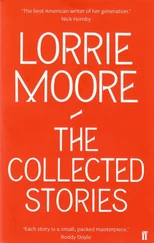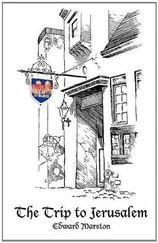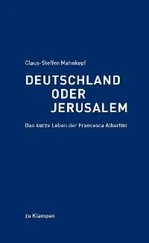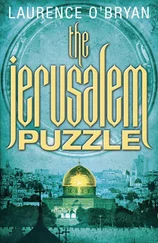Though St. Peter’s Street continues on between the relatively new and mostly vacant office buildings into Freeschool Street itself, Studs thinks he’ll maybe go the long way round, down Narrow Toe Lane into the picked carcass of the former Green Street and work his way up from there. There might be clues: a footprint or perhaps a witness previously too intimidated to come forward, some surviving stonework in amongst the brick veneers that might turn stool pigeon given the right incentive. Hands in his high jacket pockets and the elbows sticking out like dodo wings he makes his way down the vestigial lane, mentally colouring his sketchy image of James Hervey as he goes.
As Studs imagines it, the probable scenario has seven-year-old Hervey walking in from Hardingstone to school each morning, more than likely unaccompanied and for at least half of the year making the journey in pitch blackness. He’d have started out from his home village, which two centuries thereafter would acquire further gothic credentials in the person of ‘Blazing Car’ murderer Alf Rouse. The little boy, perhaps with the same delicate look, the same primly pursed lips and a tendency to bad coughs even then, scraping along utterly lightless rural byways with nothing but sudden owls for company to the old London Road. There, every weekday of his early life, the hulking headless cross, one of the stone memorials raised by Edward the First at every spot where Queen Eleanor’s body touched the earth on its long transport back to Charing by the Thames, looming up still and black against a pre-dawn grey. With little Jimmy Hervey’s front door barely closed behind him, the religiously inclined and sickly infant would have been immersed immediately in the ancient town’s mythology, with the decapitated monument a gatepost at the mouth of its funereal romance.
Then a long downhill trudge towards the blacked-out urban mass below, as yet devoid of even gaslight, the frail schoolboy making entry through the reeking shadows of St. James’s End where cursing traders pulled too soon from their warm beds load carts and barrows, calling to each other in an unfamiliar patois through the gloom. Squashed adult faces with strange blemishes, squinting, half turned towards him in the lurching candlelight and from a gated yard the steaming, shuddering snort of horses. His pink fingers numb with cold, who knows how many books beneath one weedy infant arm, the future fatalist would be obliged to mount the hump of West Bridge with the dark of the unbroken day ahead diluted almost imperceptibly at every grudging step, the timeless river heard rather than seen somewhere beneath him. At the crest, the midpoint of the span, the castle ruins would have made themselves apparent to the child in those antipodes of dusk before a risen sun could burn the fog away, a sprawling twilight acreage of tumbled stones with shrill and flittering specks about the lapsing walls, the stumps of amputated towers. Was Northampton’s crumbled fortress, currently its hooker-hub and railway station, once conceivably the larval form of every subsequent Otranto, every Gormenghast?
From there, with a determinist momentum hastening his pace the pious, ailing youngster would have trickled from the scoliotic bridge to its far bank, rolling into the Boroughs and the tangled yarn of streets, the madcap turrets wearing witch’s hats of pigeon-spattered slate. Then Marefair and St. Peter’s Church, the weathered buttresses embossed with gurning Saxon imps, Hieronymus Bosch extras yawning from some long-passed Judgement Day. A few steps further on, Hazelrigg House where Cromwell dreamed an ironclad English future on the eve of Naseby. A last right turn into Freeschool Street would bring the budding ghastly visionary to his place of education, just as a left turn is by now taking Studs into the same street’s other, lower end.
The district, which Studs still recalls from his insomniac night-jaunts of twenty years back, is unrecognisable, a loved one’s face on the first visit to Emergency after the accident. The broken spar of Green Street that has brought him from the foot of Narrow Toe Lane to his current junction has no buildings anymore, no southern coastal levees shielding the disintegrating land from the erosive tidal traffic swirl of Peter’s Way. As for the uphill climb of Freeschool Street before him now, it’s a transparent and insultingly inaccurate imposture, someone who looks nothing like your mum but turns up a week after the cremation claiming to be her. The steep lane’s western flank, once dominated by Jem Perrit’s woodyard, number fourteen, is now for the most part untenanted business premises all the way up to Marefair. As the hatchet-faced investigator haltingly ascends he tries to recreate Ben Perrit’s missing-and-feared-dead family home; superimpose the teetering two or three storey hillside edifice with its attendant stables, lofts, goats, dogs and chickens on the nearly vehicle-free forecourt of the memory-resistant modern structure that succeeds it, but to no avail. Some isolated features cling in his recall like tatters of a bygone show bill doggedly adhering to a corrugated fence — the three steps up to a black painted door, heirlooms and horse brasses displayed in the front parlour — but these fragments simply hang in empty recollected space without connective tissue, lobby cards and teasers for an unrecoverable silent classic.
Just across the way from the conspicuous absence of the Perrit home, on the untidy freehand margin that is Freeschool Street’s east side, Studs draws abreast of Gregory Street’s carious maw with the collapsing brickwork at one corner bounding an eruptive buddleia-jungle, once the backdoor entrance to St. Gregory’s Church and the free school which it incorporated when James Hervey was a pupil here. At some point after that a row of terrace houses occupied the previously sanctified ground, all odd numbers counting up from seven through to seventeen down at the Gregory Street corner if Studs’ memory serves him right, coincidentally the ages between which the young James Hervey would be visiting this humble gradient every morning. Studs thinks he remembers his client Alma Warren saying she’d had relatives who lived in one of the now derelict and roofless properties, an aunt or second cousin who’d gone mad and locked her parents out while she sat all night playing the piano. Something like that, anyway, one of the countless grubby dramas since supplanted by a butterfly bush smothering the untouched twenty-year-old rubble.
Studs is half across the spindly capillary, glancing reflexively uphill to see if anything is coming even though he doesn’t think cars are allowed down this way these days, when he notices a man and woman standing at the street’s top end apparently engrossed in conversation. Something about the flamboyant orange blur of waistcoat that the man is wearing strikes a chord and has Studs fumbling in an inside pocket for his spectacles. Reaching the street’s far side he saddles them on his ice-breaker beak and peers around the deconstructed corner house, pressed flat against its bowing wall in case one of the couple glances down the lane and spots him, the pretended habit of a lifetime.
It’s Ben Perrit.
It’s Ben Perrit, talking to a woman who’s not half his age, her hair in rows and a provocatively short red coat on that looks like it’s made from PVC. To all appearances she’s canvassing for coitus. While the beery bard has clearly raised his sights since the embrace with Alma Warren, Studs still can’t help feeling that Ben could have travelled further and done better for himself. The local poet’s prospects for romance, however, aren’t Studs’ most immediate concern right now. What’s Perrit doing here, especially in light of that apparently chance Abington Street sighting earlier? It has to be more than coincidence, or at least in Studs’ current mise en scène it does. He briefly contemplates the possibility that Perrit might be an improbably inexpert tail, perhaps employed by Warren to keep surreptitious tabs on her pet private eye, but hastily dismisses the idea. Ben Perrit, for as long as Studs has known him, has been in no state to follow his own literary calling, let alone pursue another person with perhaps less rubber in their legs.
Читать дальше












